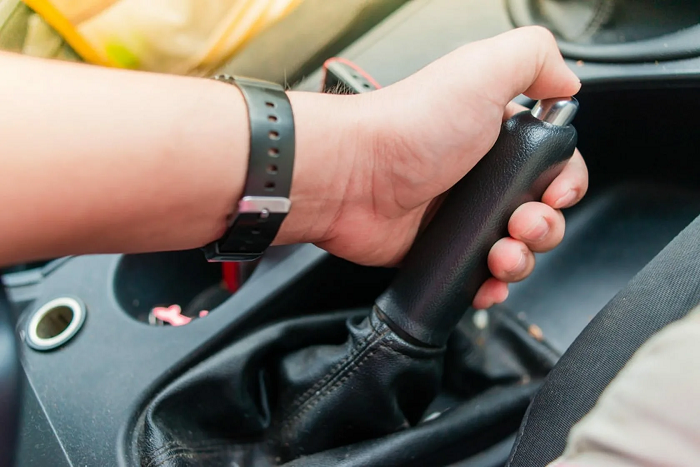Another nightmare for a driver starting to get acquainted with the “mechanics” is starting from a place on a hill. During the traffic police exam, this situation is simulated by an overpass.
If the car is not equipped with an assistant that automatically holds the car in place for some time, the risk of rolling back is very high. After all, when starting off, you have to move your right foot from the brake pedal to the accelerator.
Fearing a rollback, beginners often give more gas, drop the clutch and the car suddenly jumps forward. In everyday driving, such a technique, of course, will not lead to anything good either. Therefore, it makes sense to practice using the parking brake.
Having engaged first gear in advance, tightening the handbrake and pressing the lock button, we remove our right foot from the brake and move it to the accelerator, setting the required engine speed. Then smoothly release the clutch pedal and, at the same time as you start moving, turn off the parking brake. The car starts moving without any jerking or slipping.
And of course, you need to use the handbrake when parking. Although there is an opinion among experienced motorists that it is better to fix the car by simply putting the disabled vehicle “at speed”. Indeed, in the first or rear stage, it is very difficult for the wheels to turn the crankshaft of a stopped engine – and it can hold the car even on a noticeable ascent or descent.
The problem is that such a load can be harmful to a modern engine, especially to its timing chain drive. Therefore, you need to engage the gearbox in a parking lot only to be on the safe side and in addition to using the parking brake.


